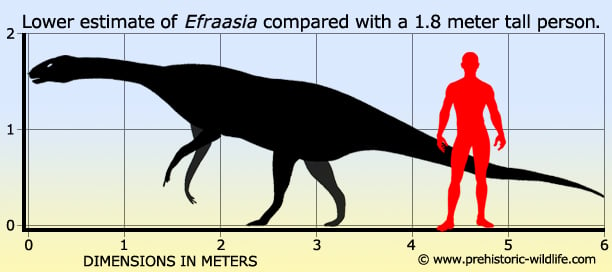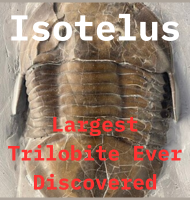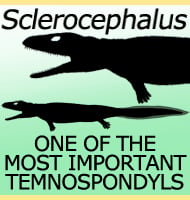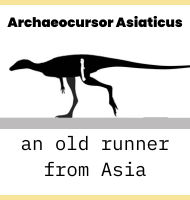In Depth
The early study of Efraasia was to say the least one born out of misconceptions. The first remains of this sauropodomorph dinosaur were being found way back in the latter half of the nineteenth century, but they were being assigned to different genera. Some of these genera were sauropodomorphs too, such as Sellosaurus and Thecodontosaurus, though later revisions of the species created when these fossils were added found the species did not actually compare well to the type species of those genera. A species of Thecodontosaurus, T. diagnosticus has now been found to be synonymous (the same as) the Efraasia type species, while a Sellosaurus species, S. fraasi is also synonymous. On a quick side note the Sellosaurus type species is also now treated as a synonym to the famous Plateosaurus which means that the whole Sellosaurus genus is no longer valid. Perhaps most bizarre of these early mix-ups was the adding of sauropodomorph remains that would later be identified as belonging to Efraasia as to the rauisuchian genus Teratosaurus, creating a then new species called T. minor, which is now a synonym to Efraasia, though the actual Teratosaurus genus is still treated as valid thanks to the earlier named type species.
So far Efraasia is only known from partial skull and post cranial skeletal remains, and probably those of juveniles, meaning that they were not fully grown. This is why early size estimates of the genus credit Efraasia as being between two and three meters long, they were being based upon the size of the known juvenile remains. Needless to say, juveniles grow up into adults and adults would have been larger than this two to three meter estimate. The first realistic adult size estimate for Efraasia came to light in 2003 in a subsequent study of the genus by Adam Yates which suggested six and a half meters. There is still debate over whether Efraasia was bipedal or quadrupedal. The development of the wrists suggest that Efraasia may have been able to put weight on the forelimbs, but others have pointed out that the forelimb bones (ulna and radius) could not pronate to point straight down. The latter hints at a more bipedal mode of locomotion, and the hands that were capable of grasping branches also suggest that the forelimbs were of more use in feeding instead of bearing weight. A middle ground could be Efraasia being bipedal when walking around, but then balancing upon the forelimbs when browsing upon low growing vegetation or bending forward to drink. Balancing though may only mean light weight bearing, with the majority of the body weight being counterbalanced by the tail with the force of the weight transmitted to the hips and down the rear legs.
As a sauropodmorph Efraasia already shows signs of an elongated neck though not even close to the extremes of later sauropods. Despite the slight elongation, the neck was still thin, with the bones indicating only the minimum of necessary muscle support. With this in mind Efraasia may have been at its developmental limit before the more radical skeletal changes of later sauropodomorphs. Gastroliths found in association to Efraasia also indicate a more exclusively herbivorous diet for this dinosaur.
Further Reading
- Die Dinosaurier der Europ�ischen Triasformation mit ber�cksichtigung der Ausseurop�ischen vorkommnisse. - Geologische und Palaeontologische Abhandlungen Suppl. 1(1): 1-419 - Friedrich von Huene - 1908. - On the anatomy and relationships of Efraasia diagnostica (Huene) n.gen., a prosauropod dinosaur (Reptilia: Saurischia) from the Upper Triassic of Germany - Pal�ontologische Zeitschrift 47(3/4): 229-255. - Peter M. Galton - 1973. - The cranial anatomy of the prosauropod dinosaur “Efraasia diagnostica”, a juvenile individual of Sellosaurus gracilis from the Upper Triassic of Nordw�rttemberg, West Germany - Stuttgarter Beitr�ge zur Naturkunde B, 117: 1-15 - P. M. Galton & R. T. Bakker - 1985. - The species taxonomy of the sauropodomorph dinosaurs from the L�wenstein Formation (Norian, Late Triassic) of Germany - Palaeontology 46(2): 317-337. - Adam M. Yates - 2003.










